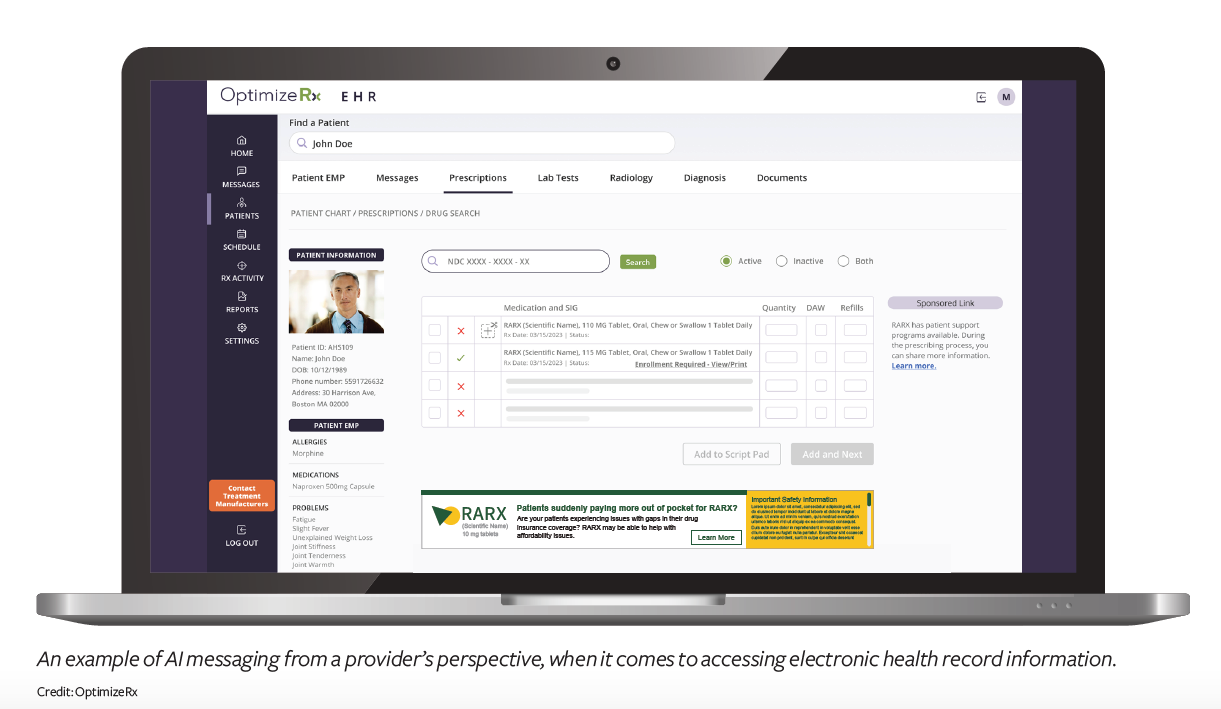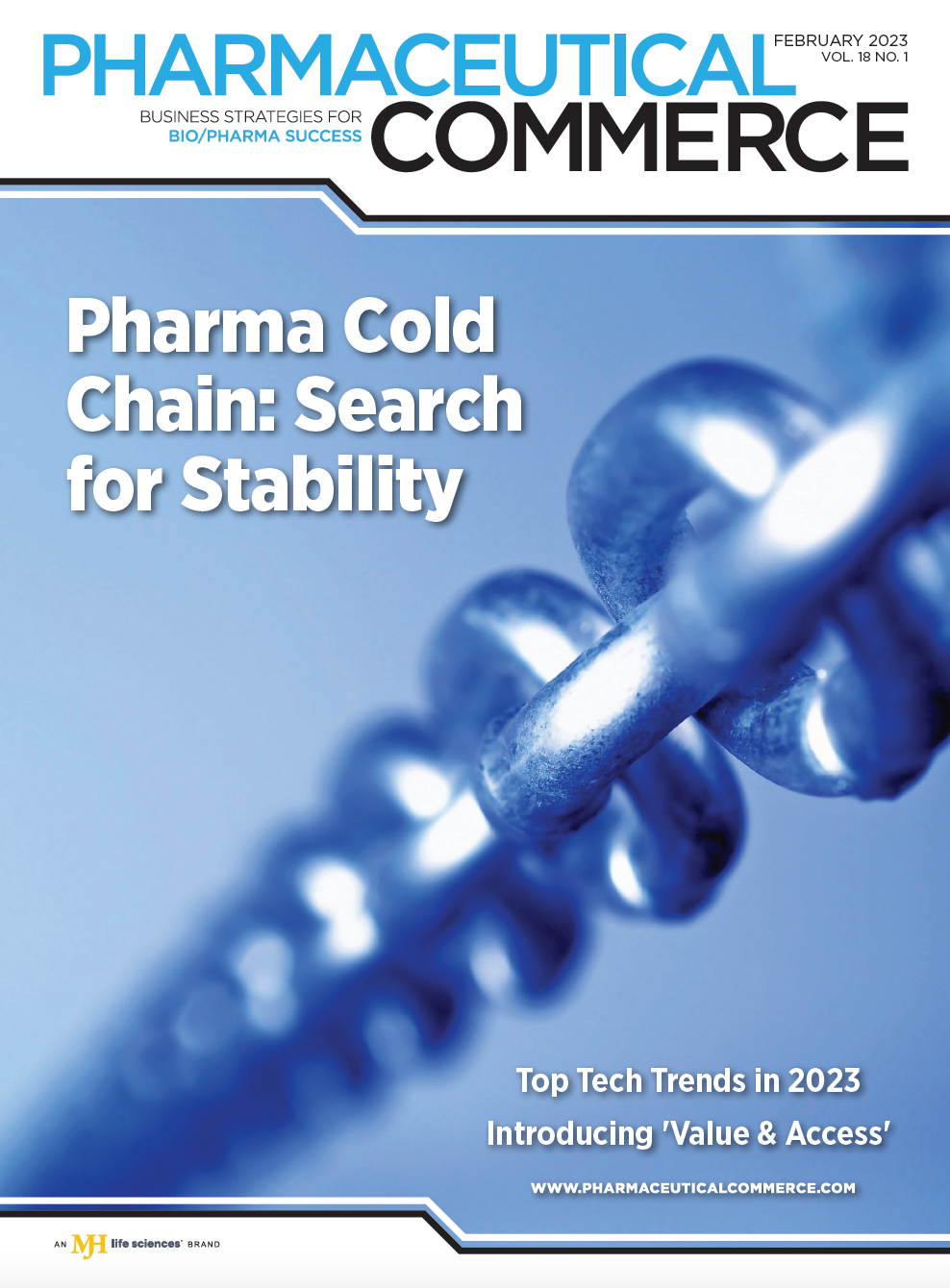Applying AI Case Studies in Pharma
How artificial intelligence and real-world data has not just helped predict patient behavior, but has also been successful at the point-of-care for life sciences companies.
Mike Rousselle

Pharmaceutical brands have successfully deployed artificial intelligence (AI)-driven real-world data (RWD) programs at the point-of-care, providing both access and cost savings for lifesaving therapies. Life sciences can now identify which physicians are treating patients for rare diseases and those who have patient populations in need of financial assistance, and who are able to deploy technology to help them access therapies and assist with unexpected costs. What’s more, by applying AI to RWD sources and messaging at the point-of-care, pharma brands can anticipate when patients will visit a healthcare provider and reach those providers at a time when they need the relevant brand or financial assistance information the most.
Given recent successes with the application of AI to RWD for life sciences, a robust AI/RWD capability will become table stakes for any pharmaceutical marketing program in 2023. Just a few years ago, applying AI to data held potential for life sciences to reach their target patients, but it was not proven. Predictive solutions have since demonstrated that they can not only accurately identify when providers are treating patients of a certain profile, but that this information can then be leveraged to support better patient outcomes. Now, life sciences companies are successfully using AI technology for provider programs at the point-of-care, making this technology not just a “nice to have” but a “must have” for any pharma brand program. Not only do brands want to be first-to-market with innovative technology solutions, but more importantly, these solutions are helping to support both providers and patients with access to therapies.
Advanced adaptability with AI
An AI-enabled program at point-of-care meets a variety of challenges that pharma brands typically face. The first advantage of applying AI to RWD is that the programs through which these insights are deployed (e.g., point-of-care messaging) will naturally improve over time as the algorithm learns. By its very nature, an AI model is just a series of experiments that are designed to learn every discernible pattern from the data it's being fed. And given the vast longitudinal data that each patient has in a real-world dataset (claims, labs, etc.), an AI model will almost always be able to perceive patterns and deliver better insights than more traditional RWD analytics. Further, as more brands deploy AI programs, the cumulative learnings of the system will begin to compound, and all brands will be able to hyper-target their messages to the physicians and patients of interest. Even after a program is launched, the data and AI model can be evaluated and adjusted in an ongoing collaborative process between brand and vendor, and the entire system will continually improve. This AI development lifecycle enables scale across programs but achieves a level of fine-grain customization to allow each brand to be hyper-specific in its patient identification and message timing.

Another benefit is precision. For the first time, brands are using this application of AI technology to identify a highly targeted audience of patients and their providers. For example, it has been successfully used to identify a small subset of patients that failed a first- or second-line drug, to anticipate patients that will be eligible for a third-line therapy. This technology also incorporates proprietary data from point-of-care messaging platforms, knowing when a brand’s messaging will not only be timely and relevant for a patient, but also which providers are most likely to utilize that information within an electronic health record (EHR).
It has also been successfully used to identify patients before they enter a health insurance coverage gap, to prevent discontinuation of medication, and keep patients on their preferred therapy for longer. In summation, using AI helps brands identify the right providers and address messaging issues, even before a problem arises.
AI applied to RWD also has a high degree of accuracy in targeting patients who are newly diagnosed, misdiagnosed, or who will become eligible for more advanced therapies. Since the technology is receiving and using new data much faster than other marketing and engagement methods, it can find newly eligible patients quickly, and adjust as underlying prescribing patterns change. This agility is extremely important in healthcare, where it can mean access to lifesaving therapies for patients who might otherwise have been left wanting. AI-enabled technology is game-changing in its ability for pharma brands to reach new or existing patients who can benefit from their treatment, right at the time when they enter eligibility, and patients who may have an extremely narrow window of eligibility for a specialty drug.
AI-driven technology is customizable for brands and patient populations. AI allows us to look at and consider various questions, such as, for example, “what is your patient journey like?” “And where are you not getting enough patients or the ones you want?” Further, it allows for hyper-targeting of providers and time windows, and readjusting on the fly as healthcare circumstances change. Marketers include this technology in the marketing mix not only because it’s a differentiator, but because it can be tailored exactly to the brand and challenges they need to solve for.
Improving oncology outcomes with AI
An oncology brand came to my team with several brand challenges: how to identify a specific group of patients who would be likely to fail their first two lines of cancer treatments, and, therefore, likely be candidates for this product, a third-line treatment. Even further—beyond identifying who the right patients were, the brand also needed to reach those patients at the critical moment when they’d be transitioning from their second to third line of therapy. And once there—with the right patient at the right time—identify the proper healthcare provider (HCP), among the patient’s care team, who would most likely be able to see and take action on the messaging they saw within their EHR.
This AI/RWD technology enabled precision messaging directly to the target audience of providers, right at the point-of-care, within a week of the likely patient-provider interaction. This system pioneered a way to find and reach this mercurial patient population and significantly impact quality of life for patients. The program prompted oncologists to consider and initiate third-line therapy, and resulted in increased patient starts on the therapy, and ultimately, a meaningful improvement in patient outcomes. Specifically, within a 12-month program, patients starting this therapy increased by 28%, and new patients from the targeted HCPs grew by 33%.
Applying AI to affordability challenges
Another life sciences brand was challenged with patients that were discontinuing medication or switching to a lower-cost brand due to the Medicare coverage gap, often referred to as the “donut hole.” A predictive data program using AI/RWD solved this issue by notifying HCPs before their patients entered a Medicare coverage gap, so that providers could help patients anticipate any unexpected costs and enroll in the manufacturer’s cost-support program. This novel marketing strategy allowed life sciences organizations to reach physicians at the point-of-care through EHR messaging and provide timely solutions, including financial assistance to patients right at the critical moments before they were at risk of discontinuing a drug due to higher out-of-pocket costs. Physician communications at the point-of-care helped encourage enrollment in the manufacturer’s cost-support program, keeping more patients on the therapy and increasing adherence at large. Results over a six-month period for a life sciences brand include:

- 46,000+ incremental scripts among HCPs receiving affordability information and financial resources for
their patients. - 27% of the HCPs identified and targeted for the affordability information program enrolled a patient for the first time.
- 200% growth over the manufacturer’s initial number of HCPs identified with “at-risk” patients.
Predictive analytics results in innovation
In general, leveraging any marketing strategy with predictive analytics is innovative for the life sciences industry, because it can be applied in real-time to anticipate and identify events in patient journeys that represent optimal opportunities for messaging. AI/RWD as a combination ensures that each message sent has the highest possible likelihood of making an impact on physician mindshare, and on patients’ lives. This solution can help brands preempt and message against upcoming access issues across different therapeutic areas, so that providers can help their patients continue to access their prescriptions.
And it’s proven highly successful, both for life sciences brand teams communicating about niche therapies with smaller patient audiences, as well as brands targeting larger patient populations.
As long as there is a critical moment in a brand’s patient journey—a point at which brand messaging would have an outsized impact—AI/RWD will help a brand find as many of those high-leverage messaging opportunities as possible. Given the adaptability of AI models, the same technology can be applied to many brand challenges and hard-to-reach populations, making this marketing strategy highly impactful for the life sciences industry in the year ahead.
About the Author
Mike Rousselle is VP of Data Product at OptimizeRx.
